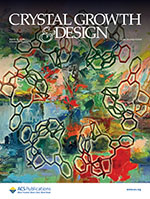Redox-active azulene-based organic cages and metalla-cages in crystal engineering
(AZMETCA)
Contract Authority: Executive Agency for Higher Education, Research, Development and Innovation Funding (UEFISDCI)
Funding programme: PNCDI IV - Program 5.8 - Cooperare Europeană și Internațională
Subprogram: Bilateral/Multilateral - Proiecte de Colaborare cu Republica Moldova
Project code: PN-IV-P8-8.3-ROMD-2023-0045
Acronym: AZMETCA
Time span: 05/2023 – 05/2026
Project abstract: Development of porous self-assembled materials, like of porous organic cages (POCs) able to recognize and host molecules, by judicious selection of the constituting building blocks is highly desirable in modern material science. Depending on the properties of the selected building blocks, the target compound can be conveniently endowed with various cooperative properties.
In this regard, electroactive and/or photochromic entities are promising candidates to access multifunctionality, since upon external stimuli a direct control of their structures and, thus of their resulting properties is possible. Their relevance is more increased when the attached cromophores bring additional properties. We have shown that the attachment of azulene moieties on this photochromic unit allows the photocyclization by irradiation with 405 nm visible light (https://doi.org/10.1039/C5RA11974J). These compounds function as fluorescent switches, exhibiting dramatic decrease in the azulene S2→S0 fluorescence emission after photocyclization. Furthermore, the cyclization reaction is also induced by electrochemical oxidation.
Our goal is to design multifunctional photochromic materials, by incorporating the azulene derivatives with substituents rationally selected into discrete organic- and metal-organic cages. The output of the project is represented by the rational design of discrete organic- and metal-organic cages able to bind a specific guest, and, subsequently, to release the guest molecule through an external stimuli.
Objectives
The project seeks to combine the principles of photocomutation processes with crystal engineering approaches, to develop compounds of interest in material science, focusing in particular on fluorescent, redox and porous properties. Two families of molecular cages will be obtained using original, electroactive and photochromic azulene derivatives as tectons.
The objectives are the following:
- Development of electroactive organic and metal-organic cages via Schiff base condensation reaction between tris-amines with different flexibility of methyleneaminic chains and azulene-dialdehydes.
- Self-assembly of photoswitchable organic and metalla- cages, employing azulenyl-dithienylcyclopentenes (perhydro and perfluoro) as carbonyl reactants for [2+3] and [4+6] Schiff condensations reaction.
The project is focused onto bringing together the strong expertise of the research groups in organic synthesis of azulene derivatives and organic/metal-organic assemblies (Romania), and computational chemistry (Moldova), resulting into a fruitful exchange of expertise.
Project progress
New organic cages were built from the reaction of tris(2-aminoethyl)amine and azulene-1,3-dicarboxaldehyde through Schiff base condensation reaction. The equimolecular reaction of the dialdehyde with the tris-amine, in the presence of trifluoroacetic acid, yielded the cationic [1+1]2+ tetraimine cage, 1, whereas a 3 : 2 ratio lead to the cyclic hexaimine cage, 2, both in presence or in the absence of the trifluoroacetic acid.
The molecular structure determinations show π-π interactions established between azulene moieties, intra-cage in the tetraimine structure and inter-cage in the cyclic hexaimine compound. The cryptand type hexaimine cyclic cage can accommodate silver cations through a template synthetic approach, resulting a disilver-metallacage. The complexation induces significant changes in the conformation of the macrobicycle, from eclipsed to a staggered orientation of the bridgehead N-CH2- bonds. Furthermore, the metallacage assembles into a supramolecular network with a honeycomb topology via π-π stacking interaction between azulene moieties. The hexaimine cage functions as halogen bond acceptor forming halogen-bonded chains with triiodoperfluorobenzene. Owing to the azulene motif, these cages show fluorescent properties, especially in solid state, the intensity and position of the emission peaks depending on the molecular environment and solid-state packing of the discrete molecules.
Team members
Coordinator: "C. D. Nenitzescu" Institute of Organic and Supramolecular Chemistry, Bucharest, Romania
Team:
Prof. Marius Andruh, project director
Dr. Simona Nica, researcher
Dr. Anamaria Hanganu, researcher
Dr. Adrian E. Ion, researcher
Dr. Andreea Horga, postdoctoral researcher
Partner: State University, Institute of Chemistry, Chisinau, Moldova
Team:
Acad. Gheorghe Duca, partner leader
Dr. Natalia Bolocan, postdoctoral researcher
Dr. Vladislav Blonschi, postdoctoral researcher
Dr. Iolanta Balan
Crina Vicol, Ph. D. student
Carolina Grigoras, Ph.D. student
Contact
"C. D. Nenizescu" Institute of Organic and Supramolecular Chemistry
Splaiul Independentei 202B, Bucharest, Romania, 060023
Prof. Marius Andruh
email: marius.andruh@acad.ro







